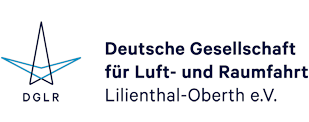DGLR-Publikationsdatenbank - Detailansicht
Autor(en):
N. Ahrenhold
Zusammenfassung:
The aviation sector is responsible for approximately 2 to 3% of global CO2 emissions. New solutions must therefore be found to reduce this environmental footprint. One solution is the development of new technologies such as hydrogen-powered aircraft and the use of alternative fuels. The development and implementation of these solutions usually requires years or decades and high investments. Another solution is to optimize the current air traffic operations. This approach can provide short- to medium-term solutions to improve flight efficiency and reduce the overall aviation emissions. The North Atlantic (NAT) Air Traffic Management (ATM) system is largely based on the communication, navigation and surveillance (CNS) technologies of how it was decades ago. The upgrades have so far been limited to reduced vertical separation minima and in-trail climb procedures in some specific airspaces. Over the NAT a track system is still being used, with large lateral separation minima to ensure safety. While ensuring safety, both this set-up as well as the underlying assumptions about CNS, severely reduce the effectiveness of the operations most of all in terms of sustainability of the operations as well as the capacity. Recent research has investigated possible improvements for the NAT ATM, such as climate-optimised routes and improved communication networks. However, there is no standardised and open-access simulation framework for comparing these different approaches. This study introduces the North Atlantic Modelling Tool – Bluesky (NATBlue), which is developed using the open ATM simulator BlueSky to fill this gap. NATBlue is a fast-time simulation framework tailored for the NAT ATM. It integrates several components, such as an aircraft performance model, a wind model, a conflict model, a logger and NAT specific components. This enables an assessment of different ATM solutions for the NAT airspace. The paper explains the general structure, the individual components and their functionalities in detail as well as ongoing developments are discussed. Finally, an exemplary usage with realistic traffic and wind data is used to illustrate the application of NATBlue. By providing an open-access modelling tool, NATBlue enables a comprehensive evaluation of different ATM strategies for the NAT ATM. This will support the effort to improve the efficiency and sustainability of NAT ATM.
Veranstaltung:
Deutscher Luft- und Raumfahrtkongress 2025, Augsburg
Verlag, Ort:
Deutsche Gesellschaft für Luft- und Raumfahrt - Lilienthal-Oberth e.V., Bonn, 2025
Medientyp:
Conference Paper
Sprache:
englisch
Format:
21,0 x 29,7 cm, 6 Seiten
URN:
urn:nbn:de:101:1-2511211151506.536997019347
DOI:
10.25967/650014
Stichworte zum Inhalt:
Air Traffic Management, North Atlantic, Fast Time Simulation
Verfügbarkeit:
Download
- Bitte beachten Sie die Nutzungsbedingungen dieses Dokuments: Copyright protected
Kommentar:
Zitierform:
Ahrenhold, N. (2025): NATBlue - A Modelling Tool for Assessing North Atlantic Air Traffic Management Concepts. Deutsche Gesellschaft für Luft- und Raumfahrt - Lilienthal-Oberth e.V.. (Text). https://doi.org/10.25967/650014. urn:nbn:de:101:1-2511211151506.536997019347.
Veröffentlicht am:
21.11.2025
